In everyone’s lifetime, at some point, we find ourselves living through the experiences that will be studied for generations to come.
Along with the personal challenges we face in these times, there is always a tremendous economic impact. COVID-19 is no exception.
When it comes to business operations, we find ourselves in a new reality, living and working in a world that is as remote as technology allows. Few, if any, would have predicted this virtual reality resulting from a global pandemic and government mandates.
Now that we’re here, business communications and operations will never be the same again.
The companies who excel, both now and in the future, will be those who make the technology choices that plan for the long term.
The impact of COVID-19 on business technology
The top six technology implications and opportunities to ensure your business and your investments are positioned for success, in both the present and the future, are:
- Utilizing technology to ensure business continuity
- Increased security measures to protect against cyber-attacks
- Implementing the back-burner projects that have long term impact
- Streamlining the communications infrastructure
- Identifying ways to save on tech spend
- Creating efficiencies in your IT organization
1. Utilizing technology to ensure business continuity
Whether it’s for employee satisfaction, work-life balance, or cost savings, now that businesses have been forced to implement work from home processes, a part of remote work culture is bound to stay.
The initial studies already prove it.
For example, even when it’s safe to return to work, a new report by Gartner indicates it’s not likely that the same number of people will be back in the office. Thanks to the benefits like reduced office space costs, 74 percent of CFOs plan to move at least some previously on-site employees to a permanently remote work status after the pandemic.
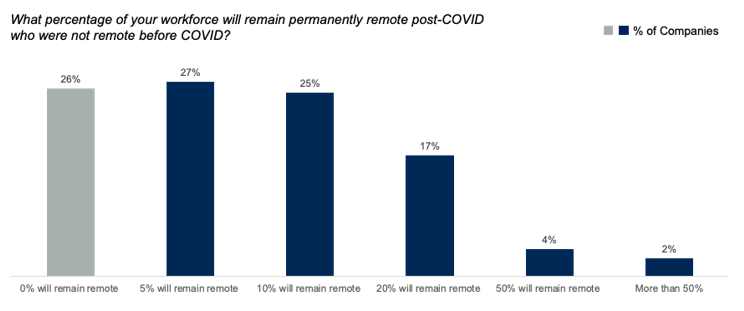
The tech requirements for business continuity go beyond enabling a long-term remote workforce.
COVID-19 does not mean client expectations go down. If anything, they’ve gone up: We’re living in a culture of community and support.
This means businesses have to deliver on promised outcomes, even when it means changes or upgrades to IT systems.
The pandemic required many of these IT changes to happen faster than companies planned – if it was part of the plan at all. However, when handled properly, the changes offer long-term benefits.
For example: Businesses who had been considering cloud migration now find themselves with the perfect opportunity to do so.
Not only does it support a remote workforce, companies polled about the benefits of cloud computing have reported an increase in productivity and flexibility.
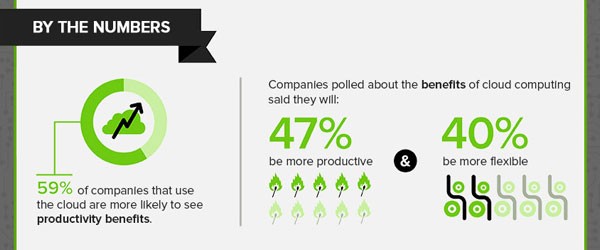
Image source: TrackVia
Once the basics are in place, businesses need to take the necessary measures to ensure systems will run without interruption. Taking action to optimize technical infrastructure, such as increasing bandwidth, ensures companies will be able to support client needs and operate efficiently when business starts coming in at a higher rate.
Band-aid solutions aren’t enough to ensure continued cash flow.
The infrastructure also needs to support all applications. From inventory management to marketing automation, ensuring a seamless customer journey during these difficult times can help businesses win and retain lifelong customers.
2. Increased security measures taken again cyber attacks
If you’ve seen the headlines, and have yet to act against cyber threats, now is the time to do so. As businesses become accustomed to the new normal of a remote workforce, the number of attacks, and tactics criminals use to execute them, continues to multiply.
Keep your company, clients, and employees safe by implementing work from home cybersecurity guidelines.
As of March 2020, the number of phishing sites detected by Google in a three-month period have increased over 350 percent.
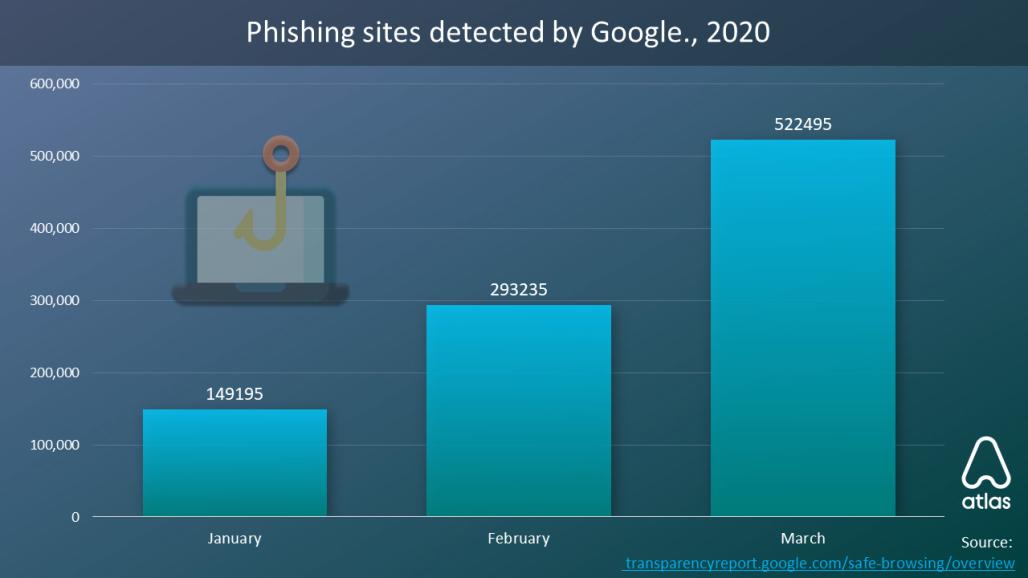
Image source: PC Mag
Private equity firms are particularly at risk. As noted by Bloomberg Businessweek, “According to more than a dozen experts…ransomware attackers see the companies in private equity portfolios as rich targets…Best of all for the attackers, these people say, targets aren’t hard to find.”
In the past, it was easy to assume, “It won’t happen to me.” With vulnerabilities now exposed, business leadership is forced to take action and implement security measures.
Utilizing a cyber security checklist is one of the easiest ways to ensure the basics are covered.
Companies who need assistance implementing these tactics can investigate a managed service provider (MSP), as we’ll discuss more in a moment.
3. Implementing back-burner projects that have long-term impact
On a daily basis, every professional is faced with business urgencies and priorities. Thanks to the non-stop urgencies, priorities – even those with the most impact – get put on the backburner.
Now is the time to bring to the forefront the projects that offer the most long-term payoff.
Examples include implementing Business Intelligence and Data Analytics capabilities, or building a new website.
These are the projects that enable accelerated growth post-crisis, which is essential, given business today is anything but the “usual,” and many elements of a business’ strategic plan have been put on hold.
If you aren’t building out your long-term plans in some way, chances are, your competition is.
This was demonstrated in a recent study by Orbit Media and the Agency Management Institute, looking at how demand for marketing service providers has been impacted by Coronavirus.
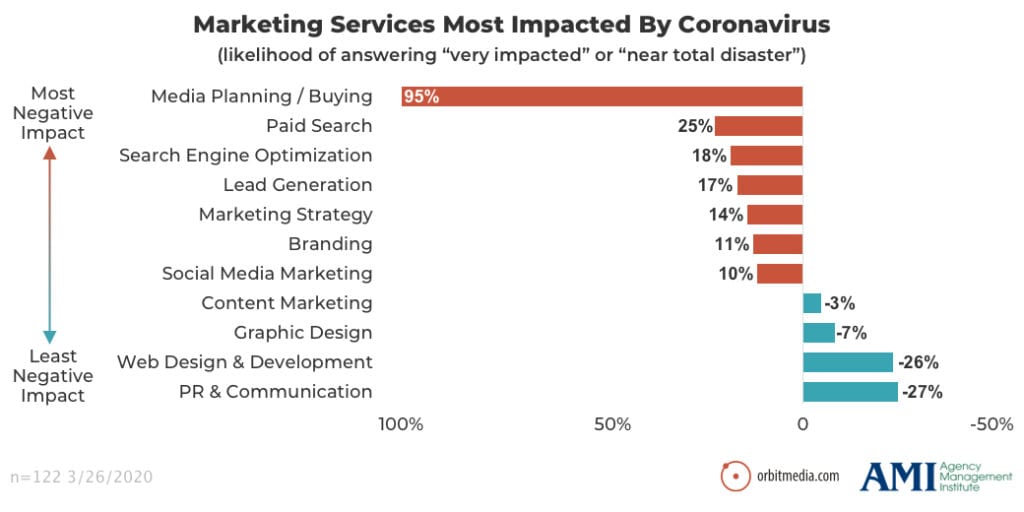
As shown in the image above, design and development are among the marketing service providers with the least negative impact. This is because initiatives such as a website redesign, or developing a digital marketing and analytics strategy, are one-time projects with a one-time fee, that set up continued success and revenue growth.
Those who see this time as an opportunity to invest in the future are most likely to excel when the crisis subsides. Identifying ways to save on tech spend to support these initiatives, as we’ll discuss in a moment, allows these projects to happen, even if business may be slower than usual.
4. Streamlining the communications infrastructure
The average full-time worker in America spends 2.6 hours, or 28% of every day, reading and replying to emails.
A work-from-home world risks putting that number even higher.
Instead of sticking with the standard channels, companies are implementing the communication procedures and technology needed to improve productivity – regardless of employees’ physical location.
For example, by utilizing social technologies within enterprises, the McKinsey Global Institute estimates that highly-skilled workers could increase productivity of interactions by 20 – 25 percent.
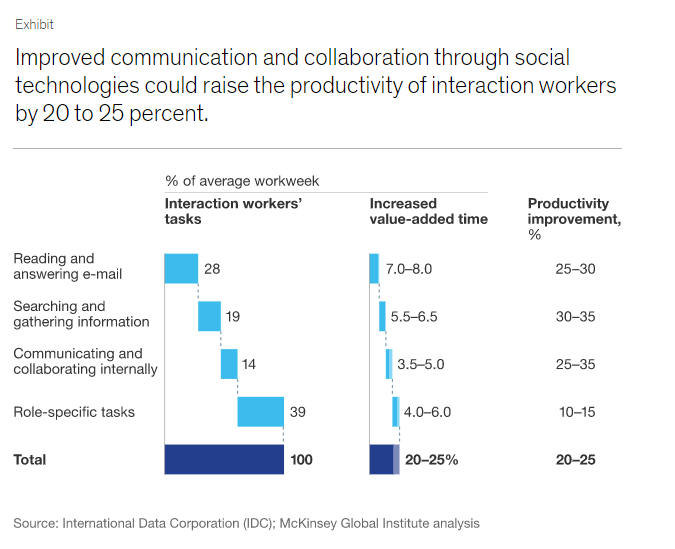
To maximize the changes already being made to communications, businesses should consider systems already in place, and identify those which aren’t being used effectively. Be honest: What’s being done “because that’s the way we do it,” versus utilizing technology to increase daily efficiency.
In addition, look for the communication tools already in place which aren’t being used to their full potential. You may be paying for software that has the power to do far more than you’ve realized.
These examples demonstrate ways communications can be streamlined both internally and externally.
5. Identifying ways to save on tech spend
While minimizing costs have always been a priority, as the economy slows, it becomes a critical necessity.
Thankfully, there are easy ways businesses can identify areas of wasted spend. Take shelfware, or unused software, for example.
According to CIO.com, the average global waste on unused software, by company, is 37 percent. Companies with under 2,000 employees are among the worst offenders, with 41 percent wasted software spend.
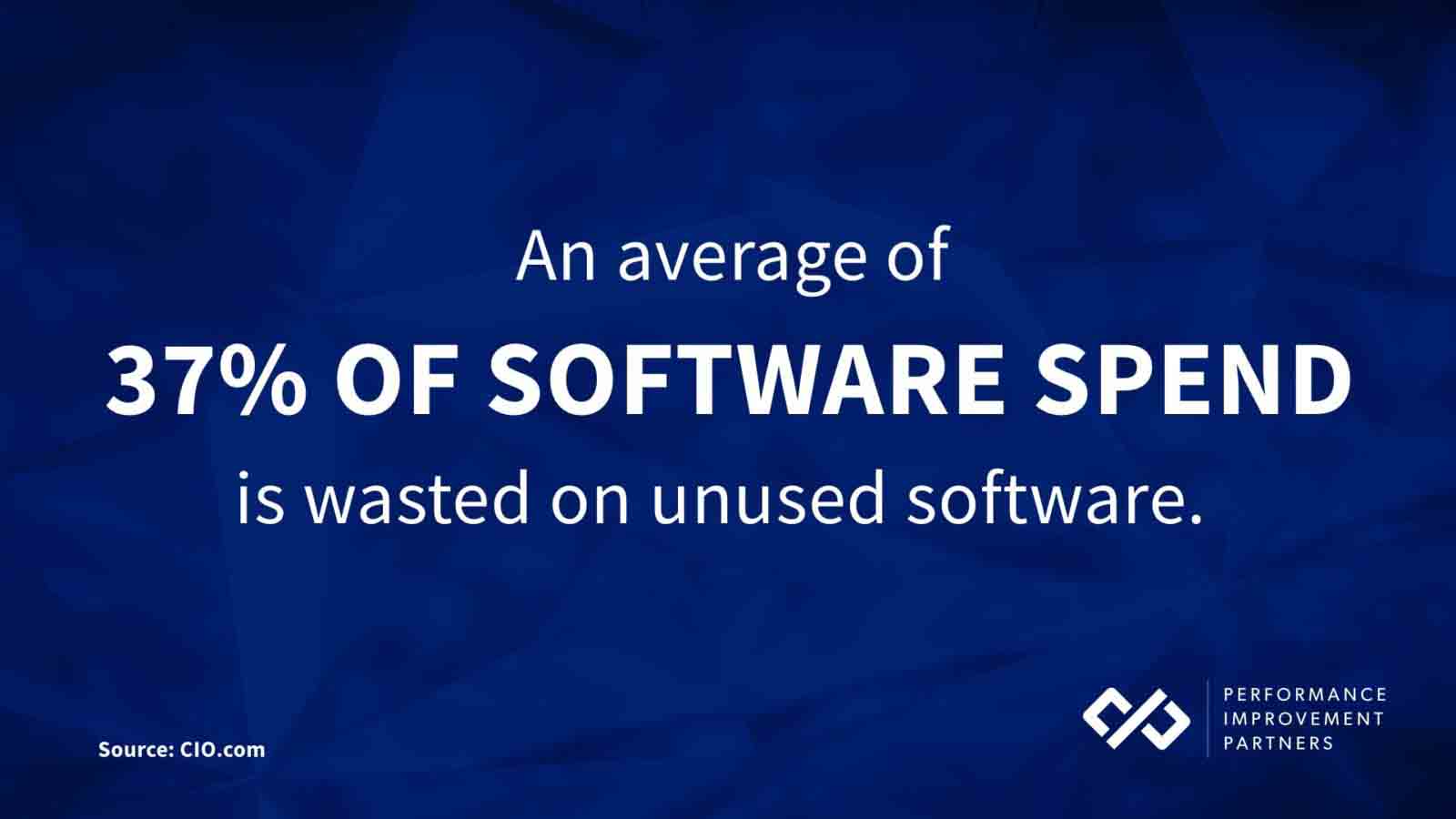
Eliminating unused software licenses and renegotiating contracts uncovers the cost-savings you had all along. These found resources enable companies to implement one-time IT projects that have a lasting impact.
The same principle applies to telecom optimization. With flexibility in contracts, now is the time to revisit telecom contracts to maximize your deal. Whether it is unused phone lines, over-utilized bandwidth, or other cost inefficiencies, identifying wasted spend ensures your strategic plans for business activities can continue.
With many employees turning to their cellphones while working from home, now is the perfect time to optimize your telecom and collaboration integrations without disrupting daily business.
6. Creating efficiencies in your IT team
As employee roles shift with the impact of Coronavirus, companies can utilize the skills of their existing IT team to become more effective.
Management can use this time to discover employee strengths, and build roles and processes that align each person’s skill set with the needs of the business.
These roles and processes include the immediate needs of our virtual world, such as the cyber security measures outlined above.
For companies lacking the skills or expertise to execute cyber protection, working with a managed security services provider (MSSP) will protect the business from heightened threats we currently face.
If not already in place, this needs to be the first step any business takes in adapting to our new reality.
When seeking a wider range of tech support, a managed service provider (MSP) certifies the IT needs of all employees are met while maintaining efficiency in both spend and business operations.
Maximizing the impact technology in the times of Coronavirus
In times like this, it’s easy for the number of unknowns we face on a daily basis to become overwhelming.
One of the best ways to respond to uncertainty is by taking action and controlling what you can.
For some, this means a shift in their IT roadmap. For others, it means accelerating what was already planned. No matter what your situation, when the entire workforce simultaneously faces change together, mindsets are more willing to adapt.
Businesses who recognize the opportunities this time brings, then utilize technology to act on it, set themselves up for success both now and in the future.
ONE-ON-ONE TECHNOLOGY ADVICE:
Reserve your free advisory sessionPerformance Improvement Partners is here for all of our Private Equity partners and portfolio companies. As such, we’re offering free consultative sessions to provide support and answer any of your technology questions.
Learn more about how we can help, and reserve your complimentary session.
RESERVE A FREE TECH ADVISORY SESSION
Get answers to questions about the points discussed here, or any of your IT needs. We’re here to offer support in any way we can.



